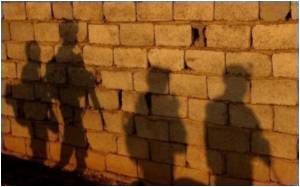Its a heart-wrenching scene as Novalee bounces up and down on his new artificial leg.

A cluster bomb blew off his real limb below the knee, leaving Novalee, 38, among the estimated tens of thousands of civilians around the world who have been killed or wounded by the weapons.
The Laotian Hmong man plans to tell his story at a conference that begins in the capital Vientiane on Tuesday. More than 1,000 government officials, charity workers, and survivors of the bombs will be aiming to speed up efforts to rid the world of cluster bombs.
Novalee lost his limb in 1992.
He had gone out to the rice fields of Bolikhamsay province when hunger hit and he decided to shoot a bird. He did not see the "bombie" that exploded at his feet.
As Novalee lay wounded for more than four hours, he thought he would die, he recalls through a translator at a local rehabilitation centre.
Advertisement
Novalee says he spent two-and-a-half years under the care of a village healer, and fashioned a homemade prosthesis out of bamboo.
Advertisement
COPE, a Laotian charity supported by foreign donors, also pays for the transportation, accommodation and food for victims like Novalee who need treatment.
"All the services for one person cost millions of kip (hundreds of dollars)," said Ki Sybounheuang, 30, COPE's prosthetics coordinator.
Victims of unexploded ordnance like Novalee account for 30 percent of COPE's patients, making them the largest group, he said.
Cluster bombs, launched from the ground or dropped from the air, split open before impact to scatter multiple bomblets over a wide area.
The bomblets can resemble a large flashlight battery or a tennis ball. Many fail to explode and can lie hidden for decades, posing a threat to unsuspecting farmers and children.
Thoummy Silamphan says he was eight years old when a bomblet blew off his left hand as he dug for edible bamboo shoots on the way home from school in Laos' Xieng Khuang province.
"Many, many people working on the farm heard it," says Thoummy, 22.
They carried him in a sarong to the main road, where a local tuk-tuk taxi took him to hospital.
"Where is my hand ?" he remembers asking himself every morning after the accident.
The US war in neighbouring Vietnam spilled into Laos from 1964 to 1973, leaving it the most heavily-bombed nation on earth per capita, says the country's National Regulatory Authority (NRA), which coordinates work on unexploded ordnance (UXOs).
Leftover cluster bombs and other UXOs contaminate up to 25 percent of the country's villages, kill or injure somebody almost every day, and create insecurity that hinders economic development, the NRA said in a report.
Even though the prosthesis that Novalee first got in 2008 has helped improve his mobility, it is not what it was before the explosion.
"I cannot work as hard as before," says Novalee, whose T-shirt spreads a warning of the hazard he knows too well.
The shirt pictures a child reaching towards a bomblet buried in bushes. Behind her, someone reacts in horror.
Novalee is still single, and his younger brother is now responsible for taking care of their poverty-stricken family of 12, he says.
Because artificial limbs wear out after at most two years, Novalee has come to COPE for a new one.
The process takes between five and seven days, says Sybounheuang, dressed in a white laboratory coat.
He and two technicians work in an area that seems like a cross between a medical examiner's room and a potter's studio. The limbs are cast in white plaster, which is then covered in brown plastic that has been heated in a large silver oven.
The most difficult part is modifying the final product so the fit is not too loose or too tight, says Sybounheuang, who joined COPE seven years ago.
"When fitting an artificial leg, they need to learn to walk again, like a baby," he says.
A type of playground for the wounded gives them practice walking over a small suspension bridge -- similar to rickety countryside crossings.
Sybounheuang grew up in the rural province of Xieng Khuang, and what he saw there motivated him to help the bomb-damaged.
"I saw a lot of amputees in my province, and most of them are jobless, and they are poor," he said. "I want to help these people."
He hopes that the conference in Laos this week, the first meeting of parties to the convention banning cluster munitions, can help clear up the bombs still left in Laos.
Sybounheuang says he does not want to make legs for any more bomb victims.
Source-AFP








